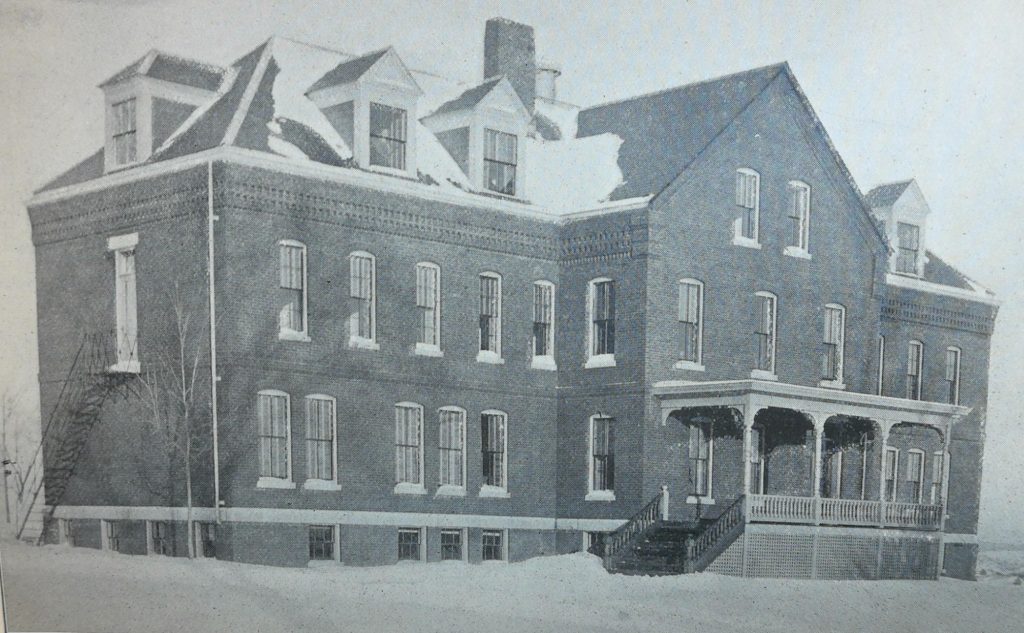
The institutions themselves were designed to feel more like family homes, rather than a traditional prison whose structure emphasizes surveillance (the tower in the middle and guard presence) and uniformity (prisoners wearing the same outfits, uniform cell block design, heavily structured time and movement). Drawing from a Victorian conceptualization of womanhood and the idea of the “domestic sphere,” women’s reformatories modelled their take on imprisonment on the family structure and a home-like setting. Multiple matrons typically headed each cottage which only housed around 30 girls, each of whom typically had their own minimally furnished room. Reformatories still engaged in more recognizable forms of control by requiring a certain amount of school time and work on various domestic skills (ex: sewing), as well as utilizing the matrons to surveil and punish the girls.
Questions
What was your first impression of this image? What did you initially think it was?
Considering the visual differences between a cottage like the one above and what we usually think of when we think of prisons, what is the importance of the physical building in conveying its meaning?
How do matrons maintain the traditional power dynamic of the domestic sphere?
